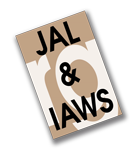Well-being as a measure for welfare when considering horses and equitation: A questionnaire on the relationship between equine welfare and the stakeholders of the equitation sector. (RI §421787)

Relación entre caballos y equitación. Un cuestionario sobre la relación entre el bienestar equino y los distintos grupos de interesados relacionados con el sector del caballo de equitación -
Sofia Sund Hagelberg
En respuesta al creciente cuestionamiento del mundo ecuestre y al creciente interés y preocupación por el bienestar animal, los últimos años han mostrado un incremento en la investigación centrada en bienestar equino y en el desarrollo de códigos de conducta y buenas prácticas para el mundo ecuestre. El efecto de esta inversión y trabajo apenas es, sin embargo, visible, ya que la evolución en equitación y mantenimiento de caballos apenas ha cambiado en los últimos 2.000 años. El objetivo de este estudio ha consistido en identificar dónde se encuentran las dificultades para la implementación y promoción del cambio dentro del mundo ecuestre y cuáles podrían ser las posibles causas de dichas dificultades. Para identificar los procesos que subyacen a la resistencia a los cambios en la perspectiva ética de los interesados en el mundo de la equitación, se diseñó una encuesta con la intención de analizar las opiniones de un segmento creciente de los propietarios o usuarios de caballos o instalaciones que se han dado cuenta (e incluso experimentados ellos mismos) de esas dimensiones éticas del bienestar animal no sólo en teoría sino también en su aplicación a sus relaciones ser humano-animal con sus propios caballos. Sobre la base de la distinción entre el bienestar como concepto objetivo (welfare) y el bienestar subjetivo del caballo (well-being), los resultados muestran que hay consenso acerca de qué indicadores se pueden usar para medir ambos. Asimismo, los resultados muestran una preocupación por la calidad de vida del caballo y por hacer que le merezca la pena vivir, e indican cómo pueden superarse las limitaciones que suponen las clásicas Cinco Libertades. Finalmente, la encuesta siembra la duda acerca de hasta qué punto la oferta actual de los distintos interesados que forman la industria profesional equina satisface las exigencias de bienestar animal y cuestiona si los profesores de equitación están preparados en cuanto a las “nuevas” dimensiones éticas de la relación humano-animal se refiere, para así asumir la educación ecuestre de los niños.
In response to the growing interest and concern for animal welfare, which have resulted in the increasing questioning of the equestrian world, research focusing on equine welfare has multiplied in the last years, as well as the development of codes of conduct and best practices for the equestrian world. The effect of this investment and labour is barely visible, as evolution in horse riding and keeping has hardly changed in the last 2,000 years. The aim of this study has been to identify the difficulties in the implementation and promotion of change within the equestrian world and what their possible causes could be. In order to identify such processes that underlie the resistance to changes in the ethical concerns of stakeholders of the equitation world, a survey was designed with the intention of analyzing the opinions of the growing segment of owners or users of horses and holdings that have become aware of, and even experienced themselves, such ethical dimensions of animal welfare not only in theory but as applied to their own personal human-animal relationships with horses. Based on the dual emphasis on welfare and well-being, consensus was found regarding the identification of which indicators can be used to measure both. The results show an overall concern with quality of life and making life worth living for horses, and how welfare can go beyond the classic Five Freedoms. Ultimately, the survey raises doubts about the extent to which the equestrian industry stakeholders actually meet and fulfil welfare expectations and questions whether horseback riding instructors are prepared in the “new” dimensions of the horse-human relationships to carry on with the equestrian education of children.
I. PROLOGUE. II. INTRODUCTION TO THE QUESTIONNAIRE: AIMS, SCOPE, CONCEPTUAL FRAMEWORK AND METHODOLOGY. 1. Aims. 2. Scope. 3. Conceptual framework. 3.1. Aligning the approach to what is perceived to be the general situation. 3.2. Welfare versus well-being and cognitive dissonance. 3.3. Rights. 3.4. Target group, age and gender. 4. Methodology. III. RESULTS AND ANALYSIS OF QUESTIONNAIRE. IV. CONCLUSIONS. BIBLIOGRAPHY. APPENDIX I: PERSONAL STATEMENT (2016). APPENDIX II: SURVEY ON EQUINE WELFARE. APPENDIX III: SUPPLEMENTARY MATERIALS: RESULTS AND ANALYSIS OF THE QUESTIONNAIRE.
